Here's a lil history of Kenyan currency you might not know about.
From salt bars to bank notes, the system of trade in East Africa has come a long way over the course of 100 years.Early use of currency in Kenya commenced with the Arab influence who were among the first to use currency as we know it. In Muscat, they used a silver coin called the Maria Theresa Thaler (MT$), first minted in Austria in 1741 and, not surprisingly, they continued using it when the Sultanate moved to Zanzibar in 1832.
By the 1860s, sailing ships from the relatively recently independent United States of America started to frequent Zanzibar, bringing not only a coarse cloth (merikani) as a commodity but also using the United States Silver dollar.
Around the same period, the silver rupee minted by the British East India Company (1600-1858) was increasingly being used along the Indian Ocean coast as the monsoon-dependent dhow trade with India expanded. These two silver coins were of the same quality but of different weights hence the exchange rate was determined by the quantity of silver in each.
The British chartered company, the Imperial British East Africa Company (IBEA), got the concession to trade in the area referred to as Kenya today. They then issued the Pice, Rupees and Annas as the currency of the region.
However, IBEA went bankrupt resulting in the Foreign Office taking responsibility of the area. A single coin, the copper Pice was minted and was the only piece of currency to bear the name East Africa Protectorate and unlike the Imperial British East Africa (IBEA) coinage which used Latin on the face.
The Indian Rupees and some of the IBEA fractional coins that were silver were still in use and hence easily exchanged with equivalent Indian coins of the same denomination (given weight and fitness).
Penetration of coins and notes only started when construction of the railway commenced in Mombasa in May, 1896, to reach Port Florence - present day Kisumu - in December, 1901. The construction, largely the work of Indian labour meant familiarity with the use of rupee coins and notes. The use of these rupees inland was noted by the different communities, introducing words into their languages for currency. The Pice was the common unit of exchange giving rise to the word "Pesa". Inland, various ethnic communities adopted the imported terminologies referring to money such as:
- Kamba - luvia,
- Maasai - iropiyani,
- Kikuyu - rubia,
- Kipsigis - Robia,
- Pokot - Ropyen,
- Luhya - Zirupia/Chirupa/tsirupia,
- Teso - Irupia,
- Luo - rupia ,
- Kisii - (off rail) chirupi,
- Embu - mbia,
- Galla - besa,
- Gabbra - besa,
- Rendille - besa/silinkini,
- Turkana - besa/ng'aropiyae
- Somali - laq
After the World War I, the East African Protectorate was not left out in trying to cope with the challenges of the post war, economic environment. Into this confused money market, a decision was made in December, 1919, to replace the Mombasa Currency Board with a London based East African Currency Board (EACB) which would cater for the existing Protectorates as well as the newly acquired responsibility of providing currency to the Tanganyika Trust Territory.
The new coins would be for "East Africa". At the same time, it was considered opportune to change the currency from Rupees and Cents to a currency convertible to sterling, thereby severing the link with India and implicitly reducing the economic strength of the Asian community.
The newly established EACB introduced an intermediate currency based on the English Florin with the thought that it would ease the transformation from Rupee to Shilling. The Florin would be the same size and shape as the Rupee and also be of silver substrate. This then became the advent of the shilling in Kenya. The shilling was however interchangeably used with the pound at a rate of twenty shillings to the pound and eventually only shillings and cents were used to independence.
As the East African territories became independent in sequence from 1962 the EACB ceased to issue notes with the image of the monarch and removed her name from the coinage. There was a desire by the three East African countries to establish a common East African Central Bank. Interim currencies were therefore introduced by the EACB to circulate within the region.
For the banknotes, the interim currency was commonly known as the "Lake Issue" currency because of the background of Lake Victoria on the notes. The notes all showed a dhow on Lake Victoria which was common territory to the three countries. The Lake Victoria designed notes were in the denominations of 5, 10, 20 and 100 shillings. For the first time, use of Hindi on the notes was dropped and Swahili first featured on these common currencies. However, Arabic was retained.
With the establishment of individual Central Banks for the three East African countries, Kenya began printing and minting its own currency under the mandate given to the Central Bank of Kenya in the Central Bank of Kenya Act cap 491. Banknotes for the Central Bank of Kenya, although not yet issued, were legalised under Legal Notice number 252 of 1966 dated 1st July, 1966. Coins were issued in April 1967. EACB banknotes ceased to be legal tender in September, 1967 while the EACB coins were demonetised in April 1969.
The initial issue of Kenya shilling notes were in the denominations of 5, 10, 20, 50 and 100 shillings, all bearing the portrait of the first President of Kenya, Mzee Jomo Kenyatta, in the front, and diverse scenes of economic activities in Kenya at the back. These notes were the first using the double title of Banki Kuu ya Kenya and Central Bank of Kenya.
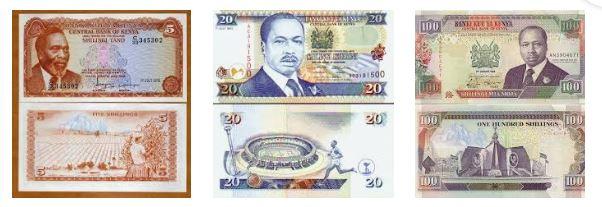
On April 10, 1967, new Kenya shilling coins were issued in the denominations of 5 cents, 10 cents, 25 cents, 50 cents and 1 shilling. The coins were minted by the Royal Mint of U.K. and made from cupro-nickel. Like the notes, the obverse featured the portrait of Kenya's founding father, Mzee Jomo Kenyatta. The reverse however featured the Kenyan coat of arms, a theme that has remained a dominant feature to the present series of coins.
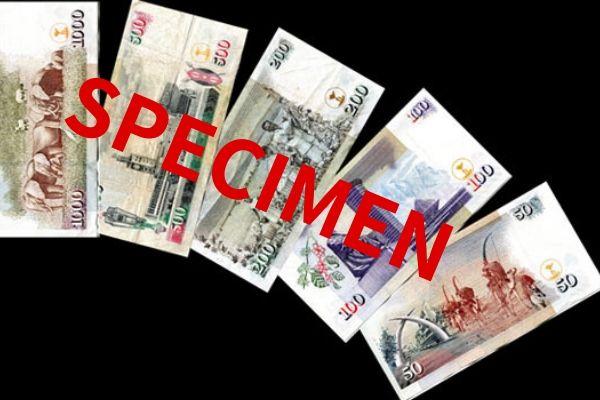
Pre-Independence Coins
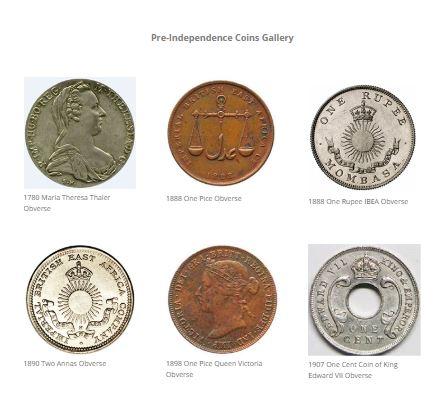
Pre-independence notes
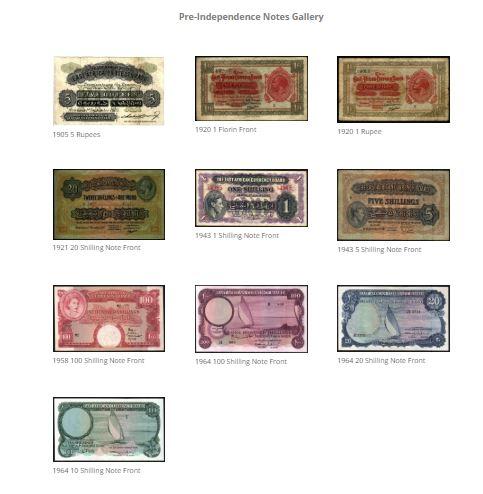
New Generation Notes C.2019
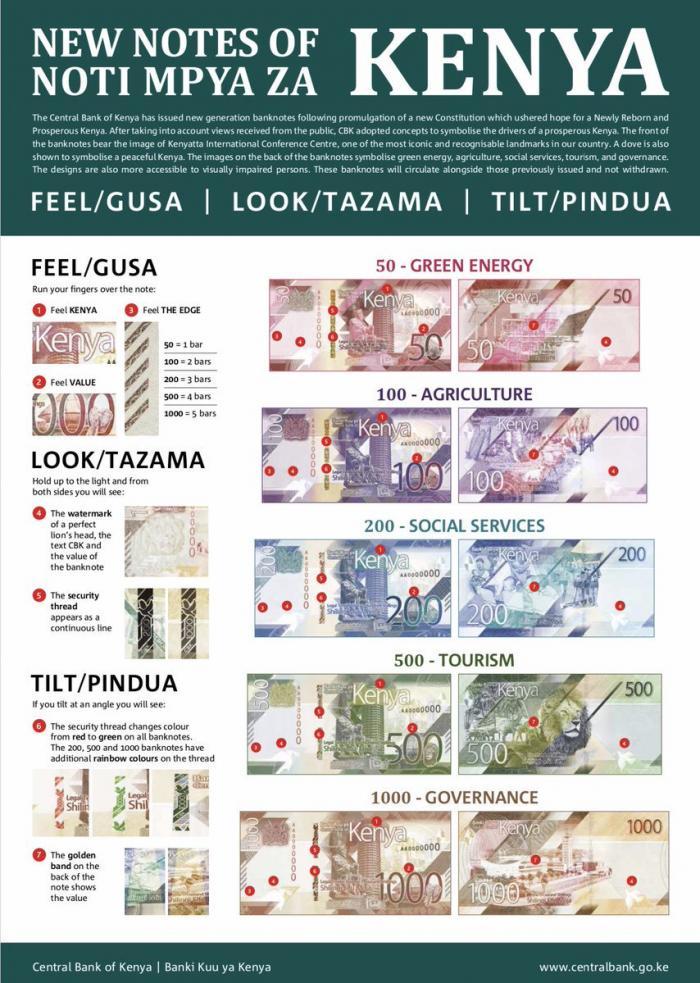
*Source: CBK




